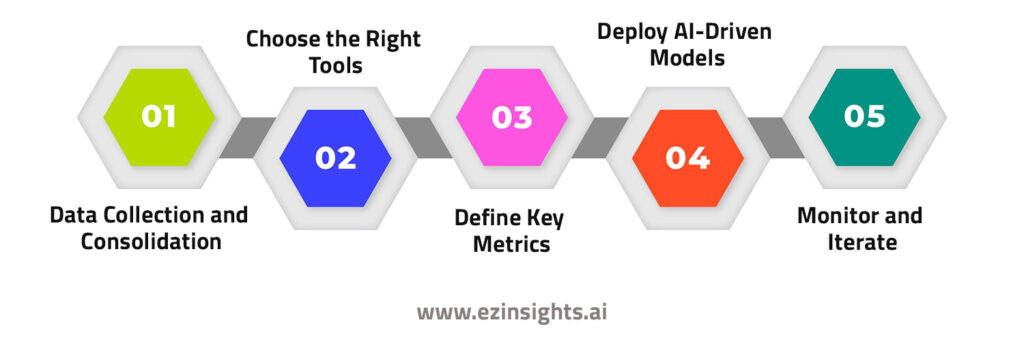In today’s competitive business environment, leveraging conversational analytics is increasingly pivotal. Businesses can connect this technology to gain deep insights from customer interactions, thereby enhancing competitiveness. For instance, McKinsey & Company reports that companies effectively utilizing conversational analytics have seen notable improvements, such as a 10-15% increase in sales conversion rates. Moreover, Forrester Research highlights that integrating conversational analytics can lead to significant cost savings, with businesses achieving a 20-30% reduction in customer service expenses.
By implementing conversational analytics, businesses not only optimize operational efficiency but also strengthen strategic decision-making processes. This technology enables organizations to break down and analyse customer conversations in real-time, uncovering valuable insights that drive actionable strategies. Whether businesses are new to the concept or seeking to enhance existing capabilities, adopting conversational analytics can revolutionize how they engage with customers and position themselves competitively in their respective markets.
What Is Conversational Analytics?
Simply put, conversational analytics is the analysis of dialogues between customers and businesses using different communication mediums like chatbots, voice assistants or customer service calls. It extends beyond traditional data analytics to encompass natural language processing (NLP) and machine learning about conversational query answers in an effortful for users to give intelligent conversational BI.
Key Benefits of Conversational Analytics
Enhanced User Accessibility
Conversational analytics allows users to interact with data using natural language, making it accessible to non-technical users through voice and text interfaces.
Improved Decision Making
By providing real-time insights and democratizing data access, conversational analytics enables faster and more informed decision-making across the organization.
Increased Efficiency
It reduces the dependency on data experts and saves time by allowing users to directly ask questions and get quick answers, speeding up the insight-gathering process.
Enhanced Data Utilization
This approach encourages broader and more frequent use of data, enabling comprehensive analysis through follow-up questions and deeper inquiries.
Personalized Insights
Conversational analytics delivers context-aware responses and customizes the experience to individual user needs, providing more relevant and tailored insights.
Cost-Effective
It lowers training costs by simplifying the analytics process and offers scalable solutions that can grow with the organization, often at a lower cost than traditional platforms.
Better User Engagement
The interactive and intuitive interface of conversational analytics engages users, encouraging regular use and exploration of data.
Enhanced Collaboration
It facilitates the sharing of insights and findings across teams, promoting collaborative decision-making and integrating seamlessly with existing communication tools.
Security and Compliance
Conversational analytics ensures controlled access to sensitive data and maintains detailed logs of interactions for compliance and auditing purposes.
Examples of conversational analytics tools
Besides typical customer and marketing intelligence software, various tools can enhance your conversational analytics process. Here are a few examples:
Speech Analytics
Tools like CallMiner or Google’s speech-to-text convert voice interactions into text and identify patterns, sentiment, or keywords using advanced algorithms.
Generative AI
Conversational AI tools such as ChatGPT can analyze large text datasets and identify patterns using language models like GPT-4.
Business Intelligence
Platforms like Tableau or Power BI visualize conversational data through detailed reports, offering a high-level view of customer insights.
Embedded Analytics
Solutions like EzInsights AI allow you to embed visual dashboards directly into your software applications, sharing conversational insights at scale.
Text Analytics
Tools like MonkeyLearn utilize artificial intelligence to process, label, and visualize customer feedback, making it easier to understand and act on conversational data.
Sentiment Analysis
Tools like EzInsights AI analyze conversational data to determine the sentiment behind customer interactions, helping businesses gauge overall satisfaction and identify areas for improvement.
Use cases of conversational analytics
Conversational analytics transforms how businesses interact with data by simplifying complex processes. Here are six key use cases where this technology enhances efficiency, customer engagement, and decision-making.
Customer Support:
Use conversational analytics to automatically respond to frequently asked questions and resolve common issues. This enhances customer satisfaction by providing quick, accurate answers and reducing the workload on support teams, allowing them to focus on more complex problems.
Sales and Marketing:
Analyze customer interactions to uncover preferences and behavior patterns. This data helps tailor marketing strategies and campaigns, targeting specific customer needs and interests. By aligning offerings with customer desires, businesses can increase engagement and drive higher sales.
Financial Reporting:
Enable users to query financial data in natural language and receive instant reports and insights. This simplifies the process of generating financial summaries, tracking performance, and making informed decisions, reducing the need for complex manual data analysis.
Operational Monitoring:
Track key performance indicators and other metrics in real time through conversational queries. This approach allows for immediate adjustments based on current data, improving operational efficiency and enabling proactive management of business processes.
Human Resources:
Provide an interactive platform for employees to get answers about HR policies, benefits, and payroll. This reduces the administrative burden on HR teams and ensures that employees receive accurate information quickly, improving overall HR efficiency and employee satisfaction.
Product Development:
Collect and analyze user feedback through conversational interfaces to guide product improvements. Understanding customer opinions and suggestions helps in making informed decisions about feature enhancements and new product developments, leading to better user satisfaction and product success.
How to analyze conversational data
Start by collecting and organizing interactions from various channels such as chatbots, customer service platforms, and social media. Use natural language processing (NLP) tools to parse and categorize this data, identifying key themes, sentiments, and frequently mentioned topics. This step involves cleaning the data to remove irrelevant information and ensuring that it is structured in a way that facilitates meaningful analysis.
Once the data is prepared, apply analytics techniques to extract insights. This includes performing sentiment analysis to gauge customer satisfaction, identifying trends and patterns to understand common issues or preferences, and generating reports on key metrics. Visualization tools can help present these insights in a clear and actionable format, enabling businesses to make data-driven decisions and improve their strategies based on real conversational feedback.
Steps to implement conversational analytics

Data Collection and Consolidation
Collect all Conversational Data from Chat Transcripts, Call Logs and Social Media Interactions Do ensure that it easily integrates with your existing BI systems for comprehensive analysis.
Choose the Right Tools
Choose conversational analytics tools including natural language processing (NLP) and more enhanced machine learning algorithms. They need to be suited for or enable conversational analysis techniques and provide insight on customer sentiment, intent and behaviour.
Define Key Metrics
Look for conversational analytics metrics that align with your specific business objectives, like CSAT scores, chat to conversion rates and response time statistics. This will give you metrics to measure what matters in the context of your conversational BI efforts.
Deploy AI-Driven Models
Utilize conversation question answering with the power of AI driven models to enable completely automated responses and increase customer service productivity. These models also support long term proactive customer engagement based on predictive analytics extracted from conversational data.
Monitor and Iterate
You should check the performance of your conversational analytics initiatives on an ongoing basis. Leverage those insights towards optimizing conversational BI strategies, enhancing customer engagement techniques and operationally streamlining!
Conclusion
When you incorporate Conversational Analytics into your business strategy with EzInsights AI, you’ll gain valuable insights from customer conversations. By combining conversational BI with advanced data analytics, EzInsights AI not only enhances operational efficiency but also improves customer experiences. Get the BALL Rolling now and set the new standard in conversational data analytics! Sign up for a free trial with one of our product experts today!
FAQs
What is Conversational Analytics?
Conversational analytics involves interpreting all interactions that take place between customers and businesses across multiple communication channels including chatbots, phone calls or live chats. This includes interpreting what the conversations reveal about customer behavior, preferences and sentiment.
Why should I use conversational analytics in my business?
Enhance your business by understanding customer needs, automating tasks, and tailoring offerings, improving service, efficiency, and sales through accelerated responses and strategic insights into customer preferences.
What applications does conversational analytics have?
Optimize customer support with conversational analytics, customize sales pitches, enhance products with customer feedback, and improve marketing by analyzing opinions and sentiments from chats and social media.

Anupama Desai
President & CEO
Anupama has more than 23 years of experience as business leader and as an advocate for improving the life of the business users. Anupama has been very active in bringing business perspective in the technology enabled world. Her passion is to leverage information and data insights for better business performance by empowering people within the organization. Currently, Anupama leads Winnovation to build world class Business Intelligence application platform and her aim is to provide data insights to each and every person within an organization at lowest possible cost.

